Animal Disease Detection Solution
Introduction
Humankind relies on agriculture and animal husbandry for food. Still, today over 20% of animal production losses are related to animal diseases. By 2050 the global population will have reached nearly 10 billion people. The rise in demand for animal protein expected between now and 2050 is about 70%. The subsequent increase in animal production will create new challenges, including in the field of disease control.
Animal disease detection is the most crucial part of disease control. Today, the most common ways of laboratory detection include nucleic acid detection and serological testing. Compared with serological testing, nucleic acid detection could find out the animals who carry the pathogens with very high sensitivity, even before the disease onset. It could achieve "early detection" and "early diagnosis" which will help to give early treatment and intervention in the follow-up to reduce severe illness and death. TransGen provides various nucleic acid detection products to detect pathogens in pigs, poultry, cattle/sheep/horse, and fishers.
Veterinary Pathogen Detection and Disease Diagnostics
Pig
Currently, there are about 50-60 swine epidemics. The main diseases are swine fever, swine flu, viral diarrhea, etc. In recent years, bacterial and viral diseases in pigs have increased to varying degrees. And there is a trend of coexistence of multiple diseases, wide and rapid spread, multiple mixed infections, and difficult treatment.
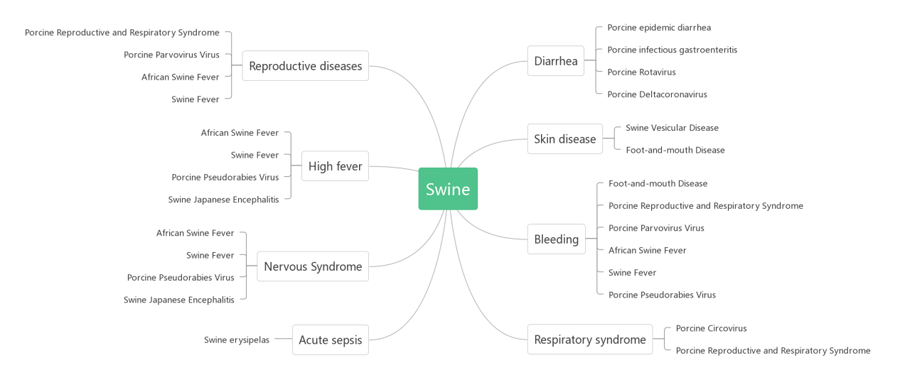
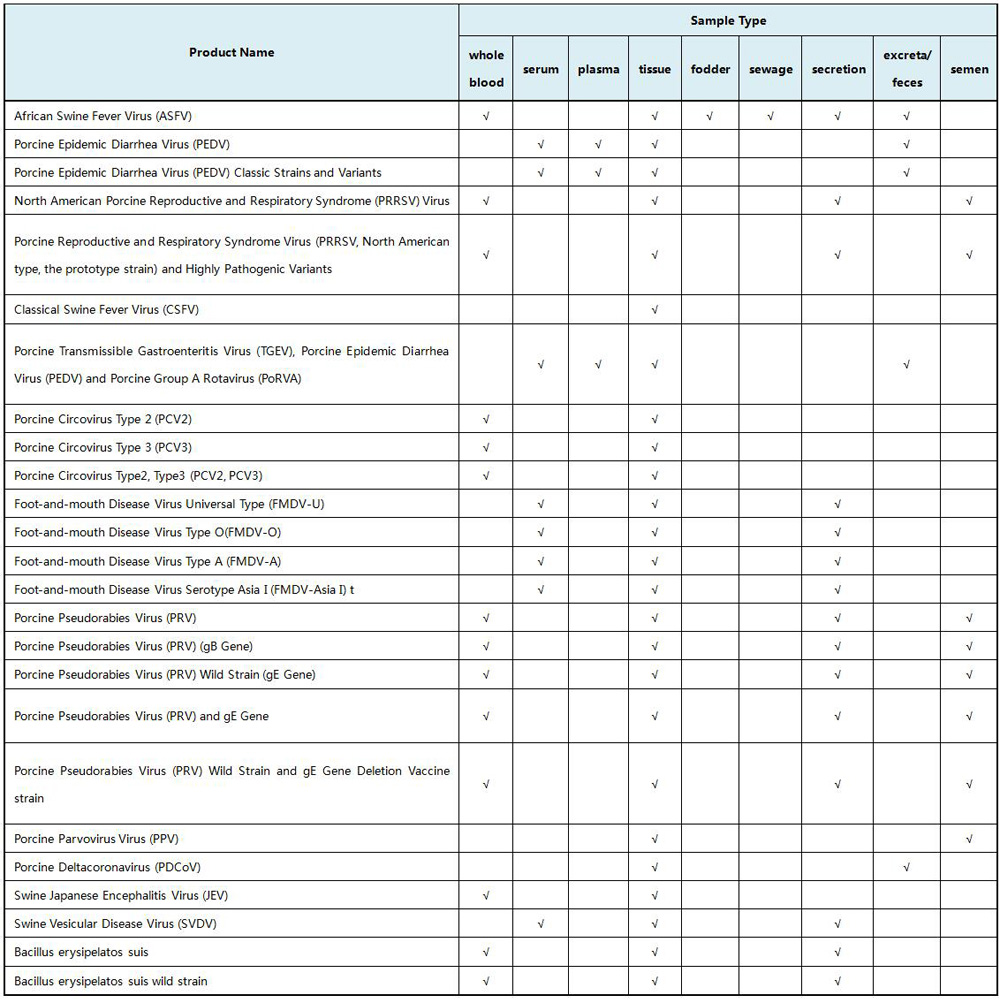
Learn more about swine pathogen detection〉
Cattle/ Sheep/Horse
At present, beef and mutton and their products account for an increasing proportion of the people's diet, and the cattle and sheep breeding industry has achieved greater development. However, the emergence of animal diseases poses a threat to the health of cattle and sheep. Among them, the virulence of the foot-and-mouth disease virus has increased year by year, and respiratory and reproductive diseases have also shown an upward trend in recent years.
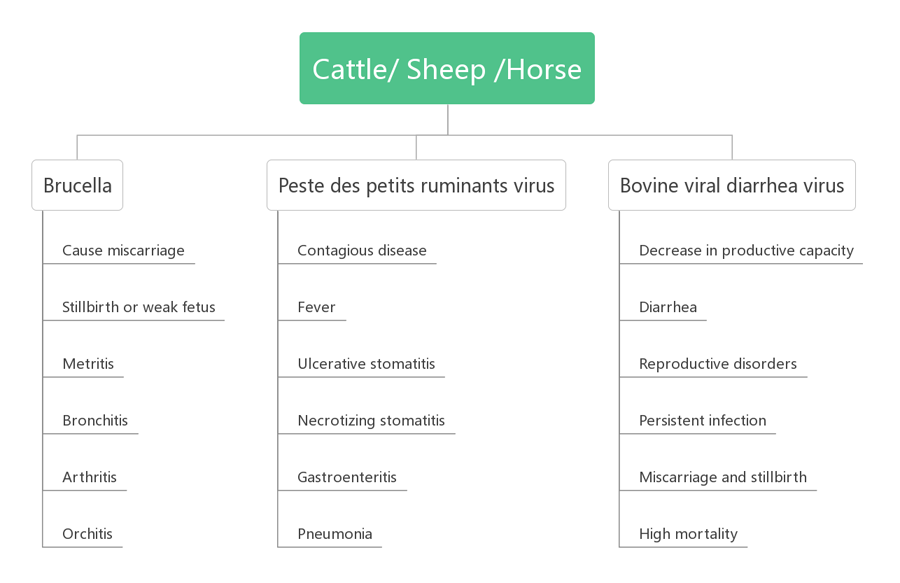

Learn more about cattle/sheep/horse pathogen detection〉
Fisheries
In recent years, with the rapid development of aquaculture, aquatic animal diseases have intensified year by year, and the overall occurrence is multiplicity, diversity, complexity, and uncertainty. At present, there are more than 100 kinds of aquatic animal diseases that are widespread in China. And about 10 kinds of diseases are most seriously spread every year. The frequency of new diseases is also accelerating.


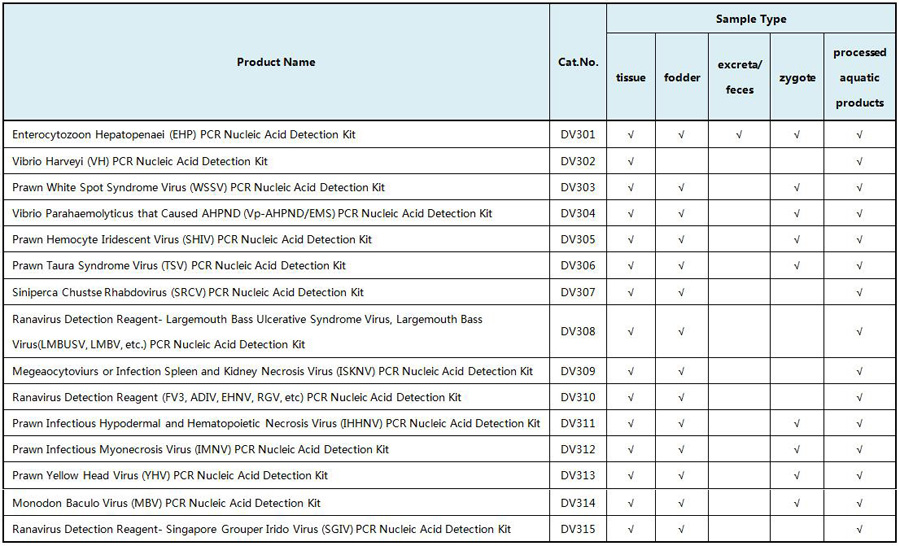
Learn more about fisheries pathogen detection〉
Poultry
In recent years, pro-vaccination has played a vital role in the prevention and control of poultry diseases. But due to factors such as pathogenic gene mutations, many poultry diseases are still prevalent and new characteristics appear. The situation of the large number of disease species, rapid pathogen mutations, new occurrences of old diseases, mixed infections, atypical clinical symptoms, enhanced bacterial drug resistance, immunosuppressive diseases make it difficult for disease prevention and control.

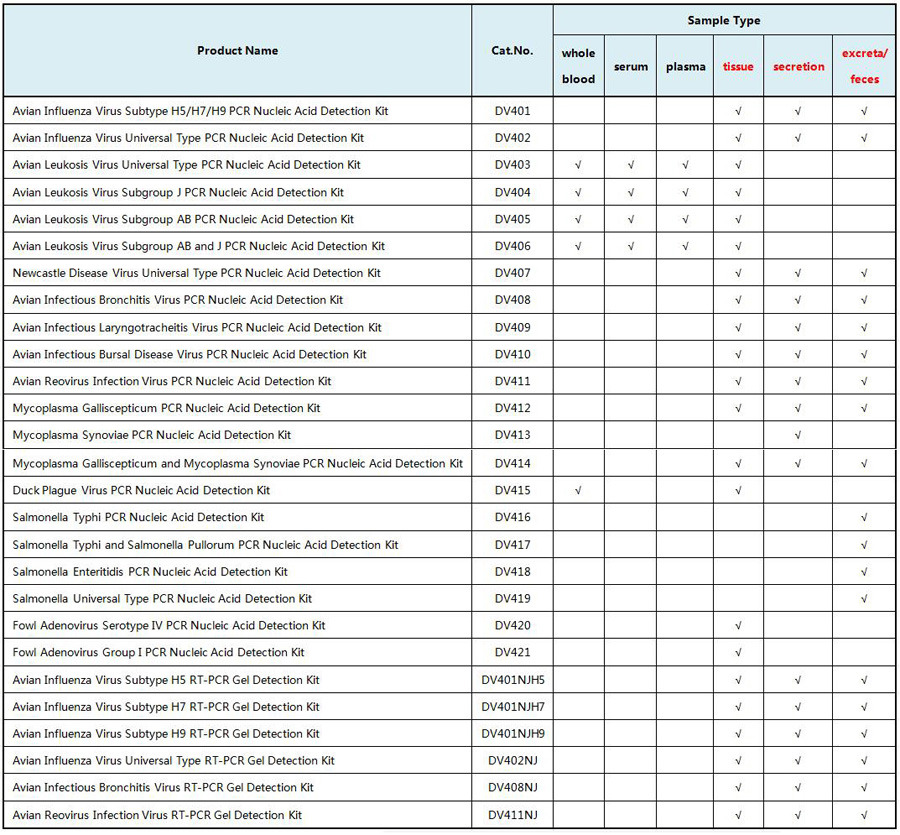
Learn more about poultry pathogen detection〉
Precautions
Acquiring precise results after detecting pathogens is very crucial for us. What should we pay attention to during the process of detection? Here we have some suggestions for you.
1. Separation of operation area in labor
Pollution in labor can lead to incorrect results, therefore, we need to separate different operation areas. Presently, general PCR can not realize single-person with single-tube and complete closed-tube operation. However, whether it can make single-person with single-tube or not, the experimental operation is required to be carried out in three different areas. The pre-processing and post-processing of PCR need to be carried out in different isolation areas:
⇩
⇩
Here are the most effective measures to prevent contamination in labor:
● ventilation in laboratory
● Use of the solution of Sodium Hypochlorite
● Use of 1mol/L HCl solution
● UV irradiation
● Air spray with the solution of 75% Ethanol or Ethanol absolute
● Each operation area must be isolated, dedicated equipment, operation in a certain direction. For instance: reagent preparation area → standards preparation area → PCR amplification and analysis area.
● Do not take products and equipment from one area to the other two areas.
2. Sample collection and processing
Sample collection is an important part of animal disease detection. It will affect the correctness of the results of PCR-Tests. Specimen collection should be operated under sterile conditions to avoid contamination. Besides, nucleic acid purification is the most critical part of PCR-Tests. The success or failure of nucleic acid purification is related to the validity of PCR -Tests. Firstly, the integrity of the primary structure of the nucleic acid should be guaranteed. Secondly, the contamination of other biological macromolecules such as proteins, polysaccharides and lipid molecules should be minimized; thirdly, organic solvents and excessively high concentrations of metal ions which can inhibit the enzymes in nucleic acid specimen should not be existed. In order to ensure the quality of sample collection and nucleic acid purification, we would like to provide you different solutions according to the different kinds of animal diseases.
References:
1. http://ivdc.chinacdc.cn/sysgl/swaq/jszl/201701/t20170104_137167.html (National Institute for Viral Disease Control and Prevention, China CDC. Reasons of contamination in PCR laboratory and its solutions[R]2017.)
2.National Health Commission of the People’s Republic of China, Interim Measures for the Management of Clinical Gene Amplification Testing Laboratories
2. Allan GM, Ellis JA. Porcine circoviruses: a review. J Vet Diagn Invest. 2000 Jan;12(1):3-14. doi: 10.1177/104063870001200102. PMID: 10690769.
3. OIE, African swine fever
https://www.oie.int/en/disease/african-swine-fever/
4. OIE, Peste des petits ruminants
https://www.oie.int/en/disease/peste-des-petits-ruminants/
5. Jaroenlak P, Boakye DW, Vanichviriyakit R, Williams BAP, Sritunyalucksana K, Itsathitphaisarn O. Identification, characterization and heparin binding capacity of a spore-wall, virulence protein from the shrimp microsporidian, Enterocytozoon hepatopenaei (EHP). Parasit Vectors. 2018 Mar 12;11(1):177. doi: 10.1186/s13071-018-2758-z. PMID: 29530076; PMCID: PMC5848443.
6. OIE, Avian Influenza
https://www.oie.int/en/disease/avian-influenza/
7. https://www.zhuangpeitu.com/article/23712450.html



















